Pilot Briefing
News from the world of general aviation
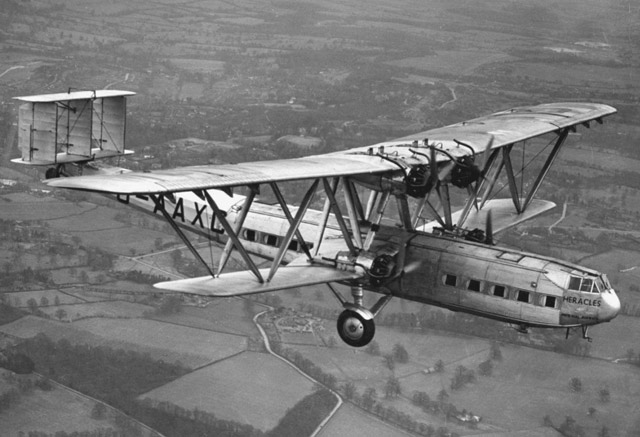
Monster biplane may return to the sky
British group has team ready to build
By Alton K. Marsh
A fundraising campaign is under way to build what was considered the Concorde of its time, the Handley Page H.P.42 25-passenger biplane. Team Merlin, which operated the Vickers Vimy World War I bomber that graced the cover of National Geographic in May 1995, is spearheading the project. The 130-foot-wingspan aircraft will be built by teams at three locations in England and assembled at two additional locations.
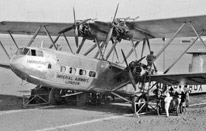 There were only eight of the biplanes built, four for service from England to mainland Europe, and four to serve India and Africa. None of the aircraft survives today, although there is a propeller at one location and a propeller hub with Team Merlin. The group is establishing a museum for artifacts. While all of the 28,000-pound aircraft eventually were destroyed—either in windstorms while parked, hangar fires, or damaged beyond repair during hard landings—no civilian passengers were injured or killed. Eight lives were lost on a military flight.
There were only eight of the biplanes built, four for service from England to mainland Europe, and four to serve India and Africa. None of the aircraft survives today, although there is a propeller at one location and a propeller hub with Team Merlin. The group is establishing a museum for artifacts. While all of the 28,000-pound aircraft eventually were destroyed—either in windstorms while parked, hangar fires, or damaged beyond repair during hard landings—no civilian passengers were injured or killed. Eight lives were lost on a military flight.
If you don’t get to see it in person (the builders are looking for a sponsor to bring it to the United States), you’ll see it at the movies. Team Merlin official Neil Farley said two movie producers are writing the aircraft into scripts. There is no schedule for when it might fly, but several sponsors have been found.
“Together with over 20 years of research to find the necessary technical information for the build, the team has also arranged the entire infrastructure for the project from websites to hangarage, and pilots to paperwork, not to mention a builder for the project who has worked on hundreds of historic aircraft around the world,” Farley said. “The airliner is a replica, as there are no major pieces of original airframe in existence, and we are giving a rough estimate of two to three years for the build, but this timeframe can change depending on how much money we have to throw at the project.”
Email [email protected]
Web: www.team-merlin.com
A flagship
This Concorde of the 1930s traveled at 100 mph and could reach a top speed of 120. It carried 24 passengers in a cabin based on a luxury Pullman railroad car. No seatbelts were installed until a seaplane accident in the mid-1930s that resulted in all aircraft, including the H.P.42 fleet, belting its passengers. The H.P.42 was the darling of royalty, celebrities, the well-to-do, and companies that wanted to use it to promote their products. The fashion industry posed models around it, and passengers who had never flown had afternoon tea during a scenic flight around London. It was the flagship of Imperial Airways.
Ride a balloon to 100,000 feet
Return to Earth via parasail
By Alton K. Marsh
 When pilot and Google Senior Vice President Robert Alan Eustace made a parachute jump from 135,908 feet on October 24, breaking the altitude mark set by Red Bull-sponsored Felix Baumgartner, he was actually conducting a test flight for something you can do without having to jump. The company that helped him break the record plans to offer the public a balloon ride to 100,000 feet for $75,000. Two pilots in your pressurized capsule will glide you back to Earth beneath a steerable parasail.
When pilot and Google Senior Vice President Robert Alan Eustace made a parachute jump from 135,908 feet on October 24, breaking the altitude mark set by Red Bull-sponsored Felix Baumgartner, he was actually conducting a test flight for something you can do without having to jump. The company that helped him break the record plans to offer the public a balloon ride to 100,000 feet for $75,000. Two pilots in your pressurized capsule will glide you back to Earth beneath a steerable parasail.
World View Enterprises of Tucson, Arizona, promises not to spill your drinks. Passengers may go as soon as 2016, but first things first; there is not yet a full-scale capsule. A 10-percent scale model was tested in June 2014. It will be capable of an automated return and landing.
For Eustace, his capsule was his spacesuit. It was built by Paragon Space Development’s Stratospheric Explorer (StratEx) team, headquartered in Tucson. The company also produced the balloon and support systems with a team of companies, including ILS, United Parachute, ADE Technologies, World View Enterprises, and four experts—including consultant Julian Nott of Santa Barbara, California, who expects to be involved in the launch mechanism for the capsule.
Email [email protected]
There are 7,692 balloon pilots in the FAA database.
AOPA Action: Three wishes
Baker asks for greater FAA support
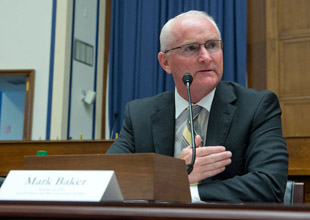 AOPA President Mark Baker highlighted issues affecting general aviation oversight, regulation, and certification during testimony before the House Transportation and Infrastructure Committee in November. Baker told committee members that the general aviation industry is under stress made worse by outdated and cumbersome FAA regulations and procedures.
AOPA President Mark Baker highlighted issues affecting general aviation oversight, regulation, and certification during testimony before the House Transportation and Infrastructure Committee in November. Baker told committee members that the general aviation industry is under stress made worse by outdated and cumbersome FAA regulations and procedures.
“The regulatory and certification processes used today may have been needed 30 or 40 years ago, but they simply cannot keep pace with today’s rapid changes and improvements in technology,” Baker said. “Changing these processes in ways that lower costs, reduce bureaucracy, and improve safety will help grow general aviation. These should be our collective goals.”
During his testimony, Baker cited three specific areas where the general aviation community needs greater support and responsiveness from the FAA: third class medical reform, aircraft certification, and the ADS-B Out mandate.
Baker told committee members that third class medical reform is long overdue, especially given that the requested changes would simply expand an existing FAA standard safely used by sport pilots for more than 10 years. He added that medical reform is a top priority for AOPA members and AOPA is committed to continuing to work on a legislative solution in the next session of Congress.
“While the FAA’s desire to create a ‘gold standard’ for safety is admirable, in practice it has had the opposite effect,” Baker said. “Allowing products that offer incremental safety improvements to reach the market more quickly would lower costs, simplify flying, and ultimately improve safety for folks flying today and into the future.”
Baker also told the committee that the FAA’s ADS-B mandate is too expensive and threatens to ground or limit the use of many general aviation aircraft. Noting that more than 81,000 of the 188,000 certified piston-powered aircraft on the FAA registry are worth $40,000 or less, and that those aircraft have a weighted average value of $25,800, Baker said the minimum $5,000 cost to install required ADS-B Out equipment is beyond the reach of many aircraft owners.
Baker emphasized that funding the FAA through excise taxes collected on fuel, rather than a user-fee system, has proven efficient and effective. He remarked that the FAA’s nearly $16 billion budget gives the agency sufficient resources to make needed changes in the way it oversees general aviation. The challenge facing the FAA, he said, is to use those resources to meet the needs of stakeholders and improve efficiencies.
“We need the FAA to embrace a system that can keep up with rapidly changing technology; that is comfortable with timely, economical, and incremental safety improvements; and that will actually work to reduce risk today for hundreds of thousands of GA pilots,” Baker said. “When pilots, industry, and the FAA work together we see positive results for general aviation.”
Baker said the highly prescriptive and inflexible nature of FAA regulations has prevented safety advances from reaching the GA community.
Build that plane
First, a team at Oshkosh built an airplane in one week with hundreds of AirVenture visitors taking a whack at a rivet, then a South African company claimed it could build an airplane in four days. And it did. A Sling 4 was built and flown in four days by 40 workers from The Airplane Factory at a South African airshow. The team included workers who build the Sling 4 for a living, marketing staff, administrative staff, and even the caterers feeding the round-the-clock team. —AKM
First Look: Mooney unveils diesel M10T, M10J
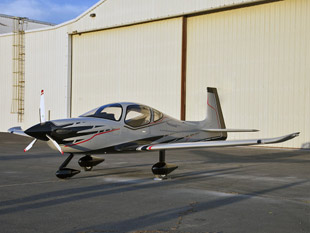 Mooney is taking aim at the international market with its new M10T and M10J diesel-powered singles announced recently. The composite, fixed-gear M10T will be powered by a Continental CD-135 diesel engine and marks Mooney’s first foray into the flight training arena. The retractable M10J plays off the popular Mooney M20J, and is powered by the Continental CD-155 diesel engine.
Mooney is taking aim at the international market with its new M10T and M10J diesel-powered singles announced recently. The composite, fixed-gear M10T will be powered by a Continental CD-135 diesel engine and marks Mooney’s first foray into the flight training arena. The retractable M10J plays off the popular Mooney M20J, and is powered by the Continental CD-155 diesel engine.
“I am very excited to officially present the new M10 series of Mooney aircraft for training and performance. These aircraft mark a new beginning for Mooney and are an indication of great product innovation coupled with Mooney’s long line of history-making aircraft,” Mooney CEO Jerry Chen said during an unveiling ceremony at the Airshow China 2014 in Zhuhai, China.
The M10T is a technically advanced trainer that Mooney said will pave the way for pilots to step up to the M20 series. The M10J is an upgraded version of the M10T aimed at having more luxury, speed (anticipated 170 knots true airspeed), and range (more than 1,000 nautical miles).
“The M20J helped change general aviation by making flying practical to more people across the U.S.,” Chen said. “Now, the M10J promises to do the same for the world.”
Mooney, which now has offices in Kerrville, Texas; Chino, California; and Beijing, China, did not immediately release price estimates but said the aircraft should receive certification and start deliveries in 2017.
Web: www.mooney.com
Helicopter systems can hear power lines
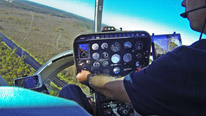 The machine gun-like staccato pulses in the pilot’s headset grew more intense and accelerated the closer the Bell 206 turbine helicopter came to power lines along Orlando’s Interstate 4. Pilot Andrew Hayden of AirOcean Aviation in Yalesville, Connecticut, was hired by Safe Flight to provide demonstrations of the system prior to the National Business Aviation Association convention.
The machine gun-like staccato pulses in the pilot’s headset grew more intense and accelerated the closer the Bell 206 turbine helicopter came to power lines along Orlando’s Interstate 4. Pilot Andrew Hayden of AirOcean Aviation in Yalesville, Connecticut, was hired by Safe Flight to provide demonstrations of the system prior to the National Business Aviation Association convention.
The helicopter landing site is used for tourist helicopter scenic flights near the Orlando convention center. The landing capped a demonstration flying 500 feet above powerlines between Orlando and Kissimmee. Hayden demonstrated that when power lines are backlit by the sun, they seem to disappear. Helicopter pilots normally have only four or five seconds to react to the sight of power lines in the flight path, but the system gives aural warning eight seconds before reaching the lines. While the system has been offered for years, it was recently upgraded to include both 50 Hz (international) and 60 Hz (United States) capabilities in one digital processing system.
The entire system adds only a pound to the weight of the helicopter, and includes a display with a sensitivity control and a button that provides a warning light. By pushing that button the pilot can silence the warning. The system is called the Dual Frequency Powerline Detection System. It is approved for a dozen helicopter models and will soon be approved for the Bell 429.
As we approached the landing site, I had mentioned to Hayden that I couldn’t see the power lines along the busy interstate. “But we can hear them,” he answered. —AKM
Civil Air Patrol extends fleet life 10 years
By Alton K. Marsh
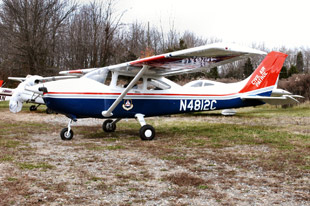 The Civil Air Patrol is doing it, and you can, too. Congress should be thrilled with how tax dollars are being used to extend the life of CAP Cessna 172, 182, and 206 aircraft by a decade through a highly successful refurbishment program.
The Civil Air Patrol is doing it, and you can, too. Congress should be thrilled with how tax dollars are being used to extend the life of CAP Cessna 172, 182, and 206 aircraft by a decade through a highly successful refurbishment program.
For $115,000 for an older Cessna 172 and up to $180,000 for a Cessna 206, the CAP sends its aging aircraft to contract shops around the nation for new engines, windows, interior, avionics, and paint. Most of the aircraft are Cessna 172 models. Costs are higher for the 206s because more expensive avionics are needed.
The program began with planning in 2008 and has expanded with its success. At the time this was written there were 13 aircraft in refurbishment, with plans to do as many as 25 more. “Some of our aircraft were timing out, and the cost of new aircraft has gone up significantly,” said Gary Schneider, CAP director of logistics. “If we can extend the life of the ones we have for another 10 years, that is a good investment. We can refurbish four or five airplanes for the cost of a new one.”
To date, 21 aircraft have been refurbished. The CAP keeps a fleet not to exceed 550 aircraft, but the organization’s role is changing. Improved emergency transmitters on aircraft pinpoint the location of even the smallest aircraft, while drones are expected to take over much of the search and rescue tasks historically performed by the CAP, Schneider said.
Refurbishment also has aided in transitioning older CAP pilots to glass cockpits. In some cases the older analog-style instruments are retained, along with the newer glass cockpits purchased initially from Aspen Avionics and lately Garmin. The older instruments act as a transition path for pilots learning to operate aircraft with digital displays, he said.
The work is being done at several shops to save the CAP from flying aircraft long distances for refurbishment. The shops are: BP Air in Lumberton, New Jersey; Boshart Enterprises and Aircraft Services in Batavia, New York; and Carson Aviation Services in Carson City, Nevada. Some of the shops do both airframe work and avionics work. Painting is done by additional contractors. —AKM
Chart challenge
Don’t tilt at windmills
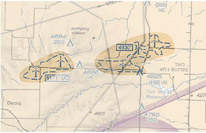 Did you know that windmills and wind turbine farms are now depicted with their own symbol on sectional, terminal area, world aeronautical, and helicopter route charts?
Did you know that windmills and wind turbine farms are now depicted with their own symbol on sectional, terminal area, world aeronautical, and helicopter route charts?
When they pop up on the chart along your planned route, there are a couple of things to keep in mind:
• Like other manmade obstacles extending more than 200 feet (sectional and terminal area charts) or 500 feet (world aeronautical charts) above ground level (agl), windmills are shown in height mean sea level with agl height in parentheses, space permitting.
• A blue dashed line delineates a wind turbine farm’s border, accompanied by a blue box with the msl altitude of the highest wind turbine in the group.
• The letters “UC” mean wind turbines are under construction or their position and elevation are unverified.
• Some wind turbines are equipped with high-intensity lights operating part-time or by proximity activation.
• Caution: Guy wires may extend outward from these structures.
For more information, review the Air Safety Institute’s Airspace Flash Cards.
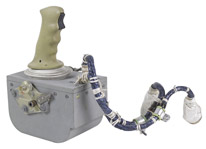
Apollo 15 hand controller brings hefty price
The hand controller used by Apollo 15 Commander Dave Scott in 1971 to fire thrusters of his moonbound lunar excursion module and correct a 3,000-foot landing error sold earlier this year at RR Auction for $610,000. “Using scribe marks on the window and angles read aloud to him by Jim Irwin, Scott found where the computer was predicting the landing site to be and then used the hand controller—flying manually, to the correct location,” an auction house statement said. —AKM
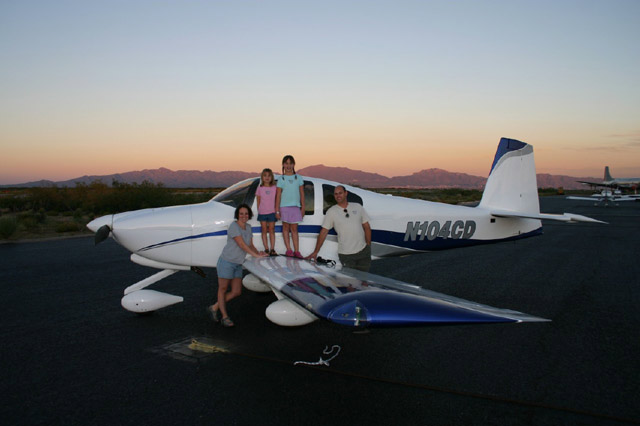
Two parents, two girls, and a continent
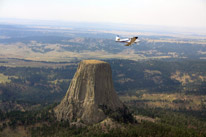
Wisconsin family flies together to all 50 states
By Dave Hirschman
Tim Olson didn’t just daydream about the places he’d fly with his family when he built an RV–10 in their garage at home. He made plans and put them in action in a series of adventures reaching from Alaska to Florida and all the states in between. They even flew together in Hawaii—but they had to rent a GA airplane for that.
Fastest and slowest ground speeds: 235 knots and 110 knots
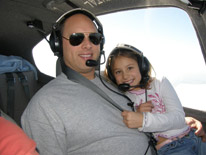
Longest trip: 7,576.5 nm, 56+ hrs
Longest flight day: Return from Bahamas: 5/4/2013. Stella Maris, Bahamas (MYLS)— St. Lucie County International, Florida (FPR)—Leesburg International, Florida (LEE)—Monroe Municipal (EFT)—Menomonie Municipal, Wisconsin (LUM). 1,573.9 nm, 11.5 hours
Highest altitude: 16,500 feet
Longest leg: Menomonie Municipal, Wisconsin (LUM)—Mallards Landing, Georgia (GA04): 4/11/2009, 781.7 nm, 10.2 gallons remaining

“The airplane now has more than 1,008 hours on it, and we’ve flown well over 150,000 nautical or 173,000 statute miles.”
The girls, Danielle—now 13—and Colleen, 15, have grown in the 10 years the Olsons have been flying their airplane, and wife Audrey has become a pilot.
From the four corners to the Devils Tower in South Dakota, the Olsons’ travel has spanned North America. What’s next? The family is building a two-seat RV–14 with even more speed and range.
St. Simons Fly-In
A perfect end to a great year
By Ian J. Twombly
Pilots joined more than 1,800 of their closest friends November 8 at beautiful St. Simons Island, Georgia, for AOPA’s last regional fly-in of the year. The day was filled with hours of seminars, great food, and incredible airplanes.
Saturday dawned with a chill in the air, especially so for the hardy campers. From Bonanzas to Cherokees to a Wilga, pilots and passengers of 17 airplanes pitched tents and enjoyed the great outdoors. “It’s always a good night’s sleep when it’s outside,” one camper said.
As the sun rose higher in the sky it beckoned the airplanes in. That’s when they heard the friendly voices of Nan and John Walsh, a husband-and-wife team who helped guide the 543 airplanes in as the Air Bosses. Hour after hour they brought them in safely and made sense of the dozens of airplanes in the air surrounding the airport. Once they arrived, pilots were treated to seven hours of seminars, including a rousing presentation from retired Navy Cmdr. Kirk Lippold. As the skipper of the USS Cole during the attack in Yemen, Lippold knows a thing or two about maintaining cool in times of crises.
Also among the attendees was newly elected South Carolina Rep. Greg Duckworth. Duckworth, who will represent the Grand Strand region of North Myrtle Beach, is an AOPA member. He met with AOPA Southern Regional Manager Bob Minter and AOPA President Mark Baker before signing AOPA’s third class medical reform petition.
During his Town Hall speech, Baker promised to cover the FAA senior management’s walls with signatures of support for the third class medical reform collected on the massive banners at the AOPA Fly-Ins.
St. Simons By the numbers
1,885 Attendees
543 Aircraft
253 Volunteers
564 Pancake breakfasts
38 Exhibit booths
31 Aircraft on display
1,785 Lunches served
122 Rusty pilots learning how to get back into aviation
This month in aviation
January 2, 1905. Wilbur Wright prepares a letter to the secretary of war to interest the Army in the use of airplanes for the military. The Army declines.
January 4, 1952. Pan American World Airways schedules the first all-cargo service in a Douglas DC–6A.
January 7, 1785. Jean-Pierre Blanchard and John Jeffries fly a hydrogen balloon from Dover, England, to Calais, France.
January 8, 1982. The Airbus A300 is the world’s first widebody airliner certified for two-crew operation.
January 9, 1923. First flight of a gyroplane, in Madrid, Spain.
January 11, 1935. Amelia Earhart is the first woman to fly solo between Hawaii and the United States.
January 13, 1942. Igor Sikorsky’s single-rotor helicopter makes a successful flight.
January 16, 1957. Three B–52Bs complete Operation Power Flite, the first nonstop around the world flight by turbojet.
January 18, 1911. Eugene B. Ely, flying a Curtiss biplane, makes the first landing on a ship.
January 19, 1784. The Montgolfier brothers make an ascent at Lyons, France, in the largest hot air balloon ever made, the Le Flesselle.
January 20, 1975. Terrorists take over an Air France Boeing 707 and take 10 passengers hostage.
January 23, 1909. First flight of the French Bleriot XI monoplane.
January 26, 1910. First seaplane built and flown by Glenn Curtiss flies in San Diego, California.
January 26, 1951. First flight of Douglas D–558-2 Skyrocket supersonic research aircraft; exceeds Mach 1 (the speed of sound) in a dive.
January 29, 1920. President Woodrow Wilson appoints Orville Wright to the National Advisory Committee for Aeronautics.
January 29, 1959. First jet passenger service across the United States in American Airlines Boeing 707s.
January 30, 1988. Boeing’s 747 SP Friendship One sets an around-the-world record of 36 hours, 54 minutes, and 15 seconds.
Sponsored by Breitling


